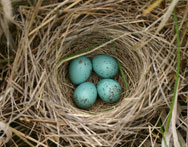Bird’s Nest Pin Case
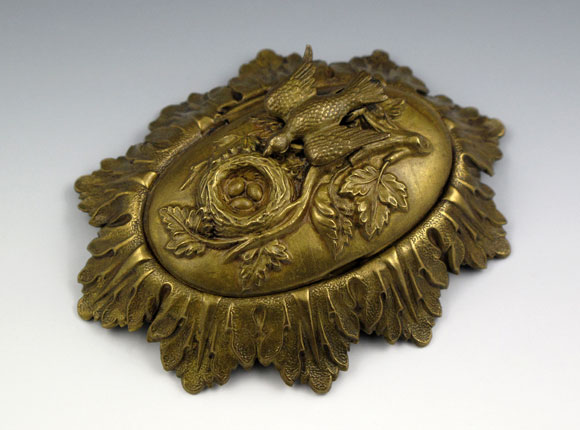
Needle Case
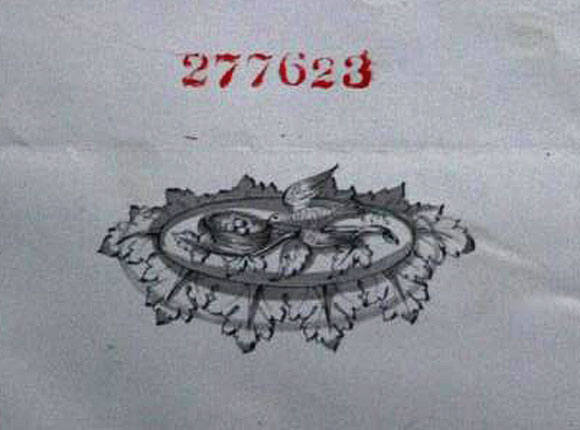
Design Representation
Design Details
Needle Case Type: |
Figural |
Patent/Registered to: |
William Avery & Son - Redditch |
Patent/Design Representation #: |
Ornamental Class1: Metal: #277623 |
Patent/Design Registration Date: |
October 28, 1873 |
Location of Patent/Design Registration: |
The National Archives (TNA) - Kew, UK |
Reference #: |
TNA Representation - BT 43/35/277623
TNA Register - BT 44/3/277623 |
Dimensions: |
7 x 2 x 5.5
|
Material: |
Brass |
Name Variations: |
W. Avery & Son - Redditch |
Other Variations: |
a) All gilt brass version
b) Gilt brass lid and bronzed brass base version |
Additional Photographs
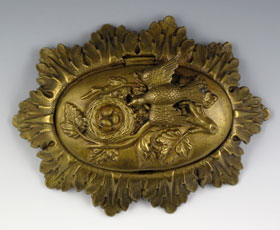
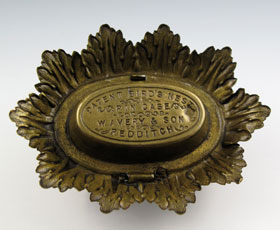
Top and bottom views
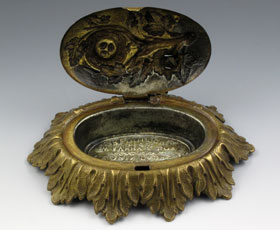
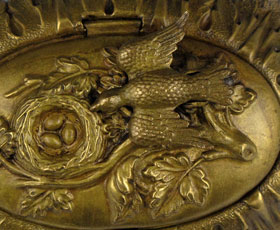
Top opened and top detail
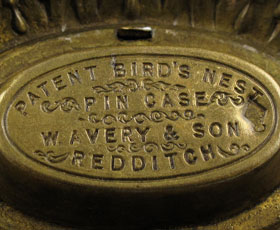
Bottom signature detail
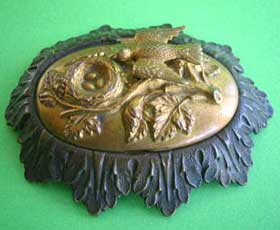
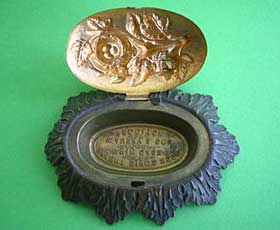
Version with gilt brass lid and bronzed brass base (photos from the Internet)
Facts
Today there are approximately ten million different bird species in the world and each has distinct characteristics that sets it apart from
the others. Many birds are migratory by nature and travel from one area to another depending upon the season of the year and
climate. The blue jay, noted for its predominantly bright blue coloring with white crest and underparts, is only found in North America.
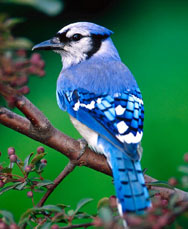
History
Birds were originally categorized in 1676 by two Englishmen educated at Cambridge. Their book is considered the beginning of
scientific ornithology in Europe. By the Victorian era it had become fashionable in England to collect and display natural curiosities such
as different varieties of birds. In some cases, a taxidermist would arrange a small diorama with an assortment of birds that one could
display in their home. The famous English naturalist Charles Darwin collected over 400 bird specimens during his 5 year world travels
on the Beagle from 1831-1836. It was during this journey that Darwin began to wonder about the variety of birds and their distribution
which eventually lead to his theory of evolution published in 1859. The city of Darwin in northern Australia was named after
him. Greeting cards and drawings of birds similar to the one illustrated below became popular in the 1870’s with the advent of
chromolithography which made it possible to mass produce them in color.
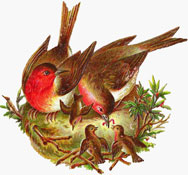
Miscellaneous
A bird’s nest is often made of a mixture of grass, mud, twigs and other things the bird finds in its surroundings. The nest is
created to provide a safe environment where the bird can lay her eggs and raise her young. Many birds build their nests in trees so
the chicks are safe from predators.
